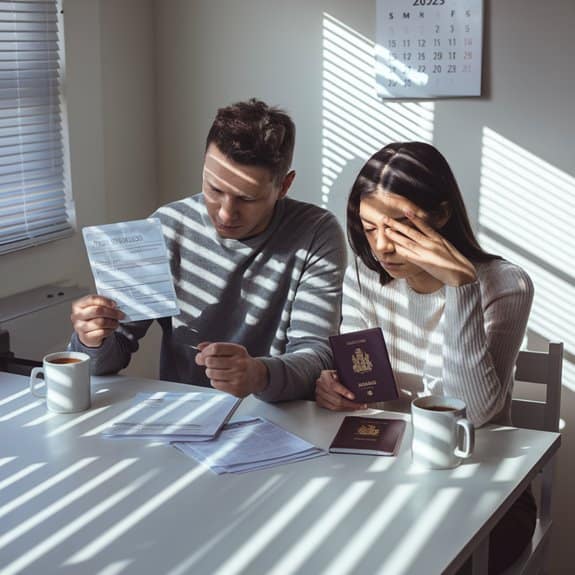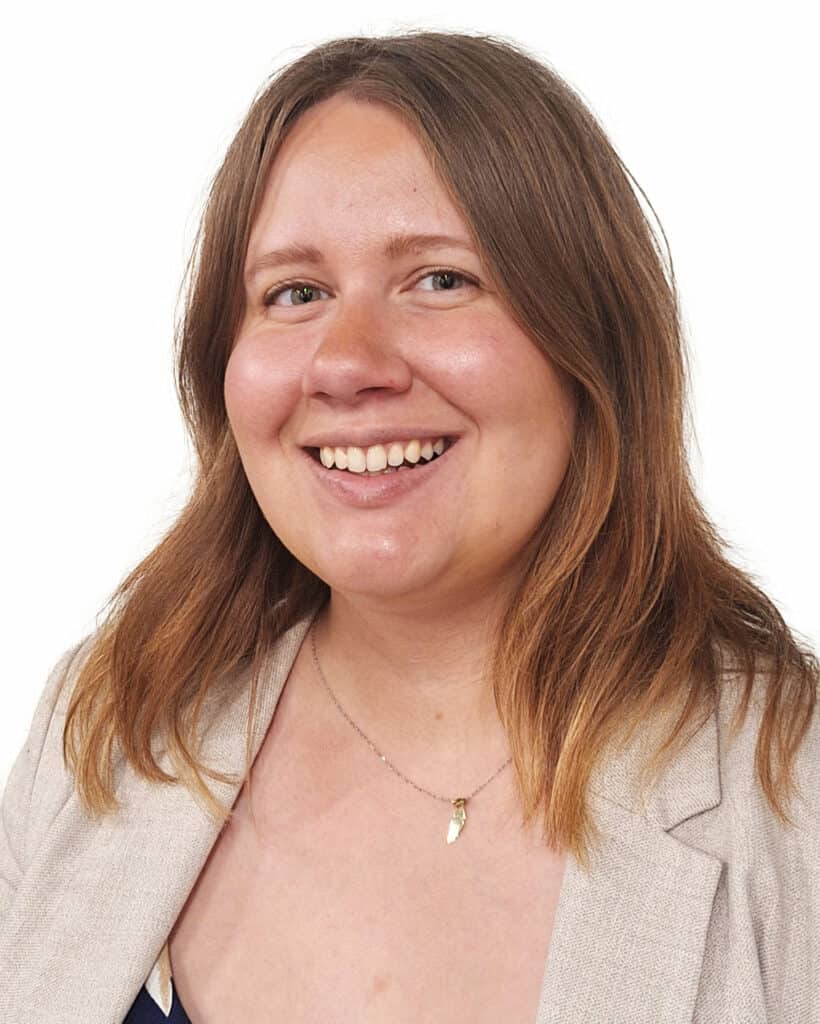
Starting January 21, 2025, you’ll face new restrictions on spousal open work permits in Canada. You’ll only qualify if your spouse works in TEER 0-1 occupations or select TEER 2-3 positions, with at least 16 months remaining on their work permit. If you’re an international student’s spouse, you’ll need your partner to be enrolled in specific master’s, doctoral, or professional programs. Understanding these changes and TEER categories will help you navigate the new requirements effectively.
Key Changes to Spousal Work Permit Eligibility
As Canada implements significant changes to its spousal work permit program in 2025, you’ll need to understand the new restrictions that limit eligibility based on specific occupational categories and program types.
Starting January 21, 2025, if you’re the spouse of a foreign worker, you can only apply for an open work permit if your partner works in TEER 0 or 1 occupations or select TEER 2 and 3 positions linked to labour shortages.
Your partner must have at least 16 months remaining on their work permit when you apply.
For international students’ spouses, eligibility is now restricted to those whose partners are enrolled in master’s programs of 16 months or longer, doctoral programs, or specific professional programs.
Dependent children of temporary foreign workers won’t qualify for open work permits anymore.
Understanding TEER Categories and Eligible Occupations
When applying for a spousal open work permit in 2025, you’ll need to understand the TEER (Training, Education, Experience and Responsibilities) system that classifies different occupational skill levels.
The new regulations primarily focus on TEER 0 and 1 occupations, which include management positions and jobs requiring university degrees.
You’ll find that select TEER 2 and 3 positions are also eligible, particularly in healthcare and skilled trades. These categories include technologists, medical professionals, health service assistants, and various trade specialists.
Your spouse’s occupation must align with these TEER categories and have at least 16 months remaining on their work permit for you to qualify.
The government maintains a specific list of eligible TEER 2 and 3 occupations, which they’ll update based on labour market needs.
TEER 2 jobs still eligible for a family OWP
NOC group 22 – Technical Occupations Related to Natural and Applied Sciences
| Occupation title | NOC Code |
|---|---|
| Aircraft instrument, electrical and avionics mechanics, technicians and inspectors | 22313 |
| Industrial instrument technicians and mechanics | 22312 |
| Electronic service technicians (household and business equipment) | 22311 |
| Electrical and electronics engineering technologists and technicians | 22310 |
| Construction estimators | 22303 |
| Industrial engineering and manufacturing technologists and technicians | 22302 |
| Mechanical engineering technologists and technicians | 22301 |
| Civil engineering technologists and technicians | 22300 |
| Construction inspectors | 22233 |
| Occupational health and safety specialists | 22232 |
| Engineering inspectors and regulatory officers | 22231 |
| Non-destructive testers and inspectors | 22230 |
| Information systems testing technicians | 22222 |
| User support technicians | 22221 |
| Computer network and web technicians | 22220 |
| Technical occupations in geomatics and meteorology | 22214 |
| Land survey technologists and technicians | 22213 |
| Drafting technologists and technicians | 22212 |
| Industrial designers | 22211 |
| Architectural technologists and technicians | 22210 |
| Landscape and horticulture technicians and specialists | 22114 |
| Conservation and fishery officers | 22113 |
| Forestry technologists and technicians | 22112 |
| Agricultural and fish products inspectors | 22111 |
| Biological technologists and technicians | 22110 |
| Geological and mineral technologists and technicians | 22101 |
| Chemical technologists and technicians | 22100 |
NOC group 32 – Technical Occupations in Health
| Occupation Title | NOC Code |
|---|---|
| Opticians | 32100 |
| Licensed practical nurses | 32101 |
| Paramedical occupations | 32102 |
| Respiratory therapists, clinical perfusionists and cardiopulmonary technologists | 32103 |
| Animal health technologists and veterinary technicians | 32104 |
| Other technical occupations in therapy and assessment | 32109 |
| Denturists | 32110 |
| Dental hygienists and dental therapists | 32111 |
| Dental technologists and technicians | 32112 |
| Medical laboratory technologists | 32120 |
| Medical radiation technologists | 32121 |
| Medical sonographers | 32122 |
| Cardiology technologists and electrophysiological diagnostic technologists | 32123 |
| Pharmacy technicians | 32124 |
| Other medical technologists and technicians | 32129 |
| Traditional Chinese medicine practitioners and acupuncturists | 32200 |
| Massage therapists | 32201 |
| Other practitioners of natural healing | 32209 |
NOC group 42 – Front-Line Public Protection Services and Paraprofessional Occupations in Legal, Social, Community, Education Services
| Occupation Title | NOC Code |
|---|---|
| Specialized members of the Canadian Armed Forces | 42102 |
| Early childhood educators and assistants | 42202 |
NOC group 72 – Technical Trades and Transportation Officers and Controllers
| Occupation Title | NOC Code |
|---|---|
| Contractors and supervisors, machining, metal forming, shaping and erecting trades and related occupations | 72010 |
| Contractors and supervisors, electrical trades and telecommunications occupations | 72011 |
| Contractors and supervisors, pipefitting trades | 72012 |
| Contractors and supervisors, carpentry trades | 72013 |
| Contractors and supervisors, other construction trades, installers, repairers and servicers | 72014 |
| Contractors and supervisors, mechanic trades | 72020 |
| Contractors and supervisors, heavy equipment operator crews | 72021 |
| Supervisors, printing and related occupations | 72022 |
| Supervisors, railway transport operations | 72023 |
| Supervisors, motor transport and other ground transit operators | 72024 |
| Supervisors, mail and message distribution occupations | 72025 |
| Machinists and machining and tooling inspectors | 72100 |
| Tool and die makers | 72101 |
| Sheet metal workers | 72102 |
| Boilermakers | 72103 |
| Structural metal and platework fabricators and fitters | 72104 |
| Ironworkers | 72105 |
| Welders and related machine operators | 72106 |
| Electricians (except industrial and power system) | 72200 |
| Industrial electricians | 72201 |
| Power system electricians | 72202 |
| Electrical power line and cable workers | 72203 |
| Telecommunications line and cable installers and repairers | 72204 |
| Telecommunications equipment installation and cable television service technicians | 72205 |
| Plumbers | 72300 |
| Steamfitters, pipefitters and sprinkler system installers | 72301 |
| Gas fitters | 72302 |
| Carpenters | 72310 |
| Cabinetmakers | 72311 |
| Bricklayers | 72320 |
| Insulators | 72321 |
| Construction millwrights and industrial mechanics | 72400 |
| Heavy-duty equipment mechanics | 72401 |
| Heating, refrigeration and air conditioning mechanics | 72402 |
| Railway carmen/women | 72403 |
| Aircraft mechanics and aircraft inspectors | 72404 |
| Machine fitters | 72405 |
| Elevator constructors and mechanics | 72406 |
| Automotive service technicians, truck and bus mechanics and mechanical repairers | 72410 |
| Auto body collision, refinishing and glass technicians and damage repair estimators | 72411 |
| Oil and solid fuel heating mechanics | 72420 |
| Appliance servicers and repairers | 72421 |
| Electrical mechanics | 72422 |
| Motorcycle, all-terrain vehicle and other related mechanics | 72423 |
| Other small engine and small equipment repairers | 72429 |
| Crane operators | 72500 |
| Water well drillers | 72501 |
| Air pilots, flight engineers and flying instructors | 72600 |
| Air traffic controllers and related occupations | 72601 |
| Deck officers, water transport | 72602 |
| Engineer officers, water transport | 72603 |
| Railway traffic controllers and marine traffic regulators | 72604 |
| Other technical trades and related occupations | 72999 |
NOC group 82 – Supervisors in Natural Resources, Agriculture, and Related Production
| Occupation Title | NOC Code |
|---|---|
| Supervisors, logging and forestry | 82010 |
| Supervisors, mining and quarrying | 82020 |
| Contractors and supervisors, oil and gas drilling and services | 82021 |
| Agricultural service contractors and farm supervisors | 82030 |
| Contractors and supervisors, landscaping, grounds maintenance and horticulture services | 82031 |
TEER 3 jobs still eligible for a family OWP
NOC group 33 – Assisting Occupations in Support of Health Services
| Occupation Title | NOC Code |
|---|---|
| Dental assistants and dental laboratory assistants | 33100 |
| Medical laboratory assistants and related technical occupations | 33101 |
| Nurse aides, orderlies and patient service associates | 33102 |
| Pharmacy technical assistants and pharmacy assistants | 33103 |
| Other assisting occupations in support of health services | 33109 |
NOC group 43 – Assisting Occupations in Education and in Legal and Public Protection
| Occupation Title | NOC Code |
|---|---|
| Elementary and secondary school teacher assistants | 43100 |
| Operations Members of the Canadian Armed Forces | 43204 |
NOC group 53 – Occupations in Art, Culture, and Sport
| Occupation Title | NOC Code |
|---|---|
| Athletes | 53200 |
| Coaches | 53201 |
NOC group 73 – General Trades
| Occupation Title | NOC Code |
|---|---|
| Concrete finishers | 73100 |
| Tilesetters | 73101 |
| Plasterers, drywall installers and finishers and lathers | 73102 |
| Roofers and shinglers | 73110 |
| Glaziers | 73111 |
| Painters and decorators (except interior decorators | 73112 |
| Floor covering installers | 73113 |
| Residential and commercial installers and servicers | 73200 |
| General building maintenance workers and building superintendents | 73201 |
| Pest controllers and fumigators | 73202 |
| Other repairers and servicers | 73209 |
| Transport truck drivers | 73300 |
| Bus drivers, subway operators and other transit operators | 73301 |
| Railway and yard locomotive engineers | 73310 |
| Railway conductors and brakemen/women | 73311 |
| Heavy equipment operators | 73400 |
| Printing press operators | 73401 |
| Drillers and blasters – surface mining, quarrying and construction | 73402 |
NOC group 83 – Occupations in Natural Resources and Related Production
| Occupation Title | NOC Code |
|---|---|
| Underground production and development miners | 83100 |
| Oil and gas well drillers, servicers, testers and related workers | 83101 |
| Logging machinery operators | 83110 |
| Fishing masters and officers | 83120 |
| Fishermen/women | 83121 |
Timeline and Implementation Details
Building on your understanding of TEER categories, you’ll want to know the specific timeline for implementing these new spousal work permit regulations.
The changes take effect on January 21, 2025, and they’ll immediately impact all new applications for spousal open work permits.
If you’re currently holding a valid work permit, you won’t need to worry – your permit remains valid until its expiry date.
You should note that the implementation doesn’t affect spouses of foreign workers under free-trade agreements or those moving to permanent residence.
For new applications, you’ll need to guarantee your spouse’s work permit has at least 16 months of validity remaining when you apply, and their occupation falls within the eligible TEER categories.
Impact on International Student Spouses
The new regulations considerably narrow the eligibility criteria for spouses of international students seeking open work permits in Canada.
If you’re married to an international student, you’ll now only qualify for an open work permit if your spouse is enrolled in specific programs.
You can obtain a work permit if your spouse is pursuing a master’s program that’s 16 months or longer, a doctoral program, or select professional programs.
These professional programs include areas like medicine, law, and nursing. If your spouse’s program doesn’t fall into these categories, you won’t be eligible for an open work permit.
It’s important to note that if you currently hold a valid open work permit, you can continue using it until its expiry date, regardless of these new restrictions.
Requirements for Foreign Worker Spouses
Under Canada’s new regulations, spouses of foreign workers face three key eligibility requirements to obtain an open work permit.
First, the primary worker must be employed in specific occupation levels: either TEER 0, TEER 1 or select TEER 2 and 3 positions that align with labour shortages and government priorities.
Second, your spouse’s work permit must have at least 16 months of validity remaining when you submit your application. This requirement guarantees continuous employment authorization throughout the process.
Finally, your spouse must either be currently working in Canada or have received approval for a work permit that hasn’t been issued yet.
If you’re applying as a spouse, you’ll need to provide documentation proving these requirements, including your relationship status and your spouse’s employment details.
Application Process and Documentation
Once you’ve confirmed your eligibility for a spousal open work permit, you’ll need to follow a specific application process and gather the required documentation.
Begin by completing IRCC’s eligibility questionnaire online to receive your personalized document checklist. You’ll need to provide proof of your relationship to the principal applicant and evidence of their legal work authorization in Canada.
Your application must include documentation showing that your spouse or partner will work for at least 16 months after your submission date and verification that they’re employed in an eligible TEER 0, 1, 2, or 3 occupations.
After gathering these materials, log in to your IRCC secure account, upload your documents, review your application carefully, and submit the required payment to complete the process.
Exceptions and Special Considerations
While most spousal open work permit applicants must meet standard eligibility criteria, several important exceptions exist for specific groups. You’re exempt from the new restrictions if your spouse is working under a free trade agreement or is in the process of shifting to permanent residence. Additionally, if you already hold a valid spousal open work permit, you can continue working until its expiry date.
| Category | Exception Details |
|---|---|
| Free Trade Agreement Workers | Spouses remain eligible for open work permits regardless of TEER level |
| Permanent Residence Applicants | Spouses maintain eligibility during PR application process |
| Existing Permit Holders | Current permits remain valid until expiration date |
Transition Period Guidelines
To help workers and their spouses adapt to the new regulations, Immigration, Refugees and Citizenship Canada (IRCC) has established specific adjustment period guidelines that will be in effect throughout 2025.
IRCC is easing the transition with adjustment guidelines, helping workers and spouses navigate the updated regulations through 2025.
If you’re currently holding a valid spousal open work permit, you’ll be able to continue working until your permit expires.
When it’s time to renew, you’ll need to meet the new eligibility criteria based on your spouse’s TEER level and remaining work permit duration.
If your spouse works in TEER 0, 1, or eligible TEER 2 and 3 occupations, you can apply for renewal under the new guidelines.
However, if your spouse’s occupation doesn’t meet these requirements, you’ll need to explore alternative work permit options or adjust your employment plans accordingly.
Long-term Effects on Canadian Immigration
The new restrictions on spousal open work permits will considerably reshape Canada’s immigration landscape over the next decade.
You’ll see a significant reduction in the number of temporary residents, with IRCC projecting 150,000 fewer work permits issued over three years. This change will directly impact Canada’s labour market dynamics, particularly in sectors that have relied heavily on spousal workers.
These restrictions will likely influence how international talent chooses their destination countries. Skilled workers might opt for nations with more flexible family immigration policies.
However, the changes may strengthen Canada’s targeted approach to addressing specific labour shortages, as spouses of workers in TEER 0, 1, and select TEER 2 and 3 occupations will still qualify for work permits, aligning immigration with the country’s economic priorities.
How Canadian Currents Immigration Can Help
Maneuvering through these new immigration changes requires expert guidance, and that’s where Canadian Currents Immigration can step in to help.
Our team of immigration lawyers, consultants, and paralegals brings decades of combined experience to your case, guaranteeing you’ll receive tailored assistance throughout your SOWP application process.
With decades of collective expertise, our legal specialists provide personalized guidance to streamline your SOWP immigration journey.
We’ll work with you to determine your eligibility under the new 2025 restrictions, gather the necessary documentation, and guide you through each step of the application.
Whether you’re the spouse of a foreign worker in TEER categories or an international student’s partner, we’ll help you navigate the complex requirements efficiently and cost-effectively.
Our dedicated professionals will ensure your application meets all current criteria while maximizing your chances of approval.
Frequently Asked Questions
Can Spouses Switch Employers While on an Open Work Permit?
You can switch employers freely while holding an open work permit since it doesn’t tie you to a specific employer, occupation, or location within Canada. That’s the main advantage.
What Happens if the Primary Worker Loses Their Job Mid-Permit?
If your spouse loses their job, you can continue working until your open work permit expires, but you won’t be able to renew it unless they find eligible employment again.
Are Common-Law Partners Eligible for These New Work Permit Regulations?
Yes, you’ll have the same eligibility as married spouses if you can prove your common-law partnership through documentation showing at least 12 months of continuous cohabitation with your partner.
Can Spouses Work Remotely for Employers Outside of Canada?
You can work remotely for employers outside Canada if you have a valid spousal open work permit, but you’ll need to comply with Canadian tax laws and regulations.
Will Medical Examinations Be Required for Spousal Work Permit Applications?
You’ll need a medical exam if you’re working in healthcare, childcare, primary/secondary education, or other occupations where public health is a concern, regardless of work permit type.
Conclusion
You’ll need to carefully plan your spousal work permit strategy before January 2025. If you’re working in Canada or studying in eligible programs, review your TEER category and permit duration to guarantee you meet the new requirements. Remember to verify your occupation’s eligibility and check your remaining work permit time. These changes will greatly impact family immigration, so start preparing now for a smooth shift.

We serve ALL of Canada. Currently have offices Western Canada — Vancouver, Calgary, Edmonton, Kamloops and Red Deer. We also have the infrastructure to work with any of our clients virtually — even from the furthest regions of the Yukon to Newfoundland.
Call (778) 331-1164 [toll free 1 (844) 715-0940] to get routed to the best office for you or contact us online to schedule an appointment.
We also have a dedicated intake form to help you get the ball rolling. Our intake team will review your specific case and advise you on the next steps to take as well as what to expect moving forward.
Our offices are generally open 8:30 a.m.—4:30 p.m., Mon—Fri.

Shantale D’Aoust
IMMIGRATION LAWYER
Shantale has vast advocacy experience, and she strives to help her clients navigate through their legal issues by assessing risks to provide practical options and tailored solutions to their unique legal matter. Her core areas of practice include permanent residence and temporary residence applications and appeals, and matters involving the interplay between immigration laws and family law issues.



